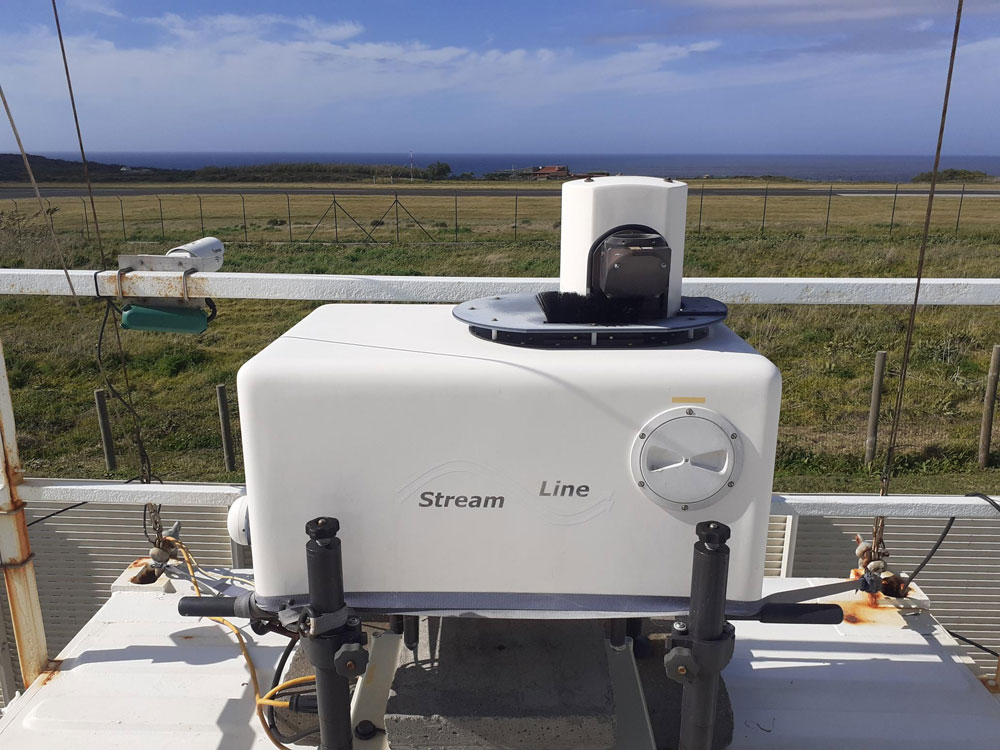Companion Data Sets Key In on Eastern North Atlantic Doppler Lidar
Published: 22 April 2022

Two new Doppler lidar principal investigator data sets are available from the Atmospheric Radiation Measurement (ARM) user facility’s Eastern North Atlantic (ENA) atmospheric observatory.
Doppler lidars, which record backscatter and mean Doppler velocity, are sensitive to echoes from aerosols and hydrometeors. One of the new ENA data sets provides noise-filtered, calibrated backscatter to help distinguish Doppler lidar return signals corresponding to aerosols from those corresponding to hydrometeors. This clear-air vertical air motion data set also includes noise-filtered mean Doppler velocity and the noise-filtered, calibrated gradient of backscatter that is used to derive estimates of cloud base height.
The clear-air vertical air motion data are from June 1 to July 31, 2017—the summer intensive operational period of ARM’s Aerosol and Cloud Experiments in the Eastern North Atlantic (ACE-ENA) field campaign. ACE-ENA also included an intensive operational period in January and February 2018; however, the Doppler lidar was not operational during this period.
This high-resolution data set could help researchers investigate vertical air motion within the marine boundary layer. The data only pertain to instances when the Doppler lidar operated in vertically pointing mode.
Using clear-air vertical air motion data from a six-year period at the ENA, including during ACE-ENA, researchers derived properties describing turbulence within the marine boundary layer on hourly timescales. The properties include profiles of variance and skewness (asymmetry) of vertical air motion, updraft and downdraft strength, and updraft and downdraft fraction.
This data set reports the hourly estimates of turbulence properties from January 1, 2015, to January 1, 2021. Using these data, researchers can evaluate model simulations or perform process-level studies.
Both data sets are available in netCDF files. All variables in the clear-air vertical air motion data set have a time resolution of 5 seconds and a range resolution of 30 meters. Because of its high resolution, one file per day is available for the clear-air vertical air motion data set. The turbulence data set is available as a single netCDF file.
Access the clear-air vertical air motion and turbulence data sets in the ARM Data Center. (Go here to create an account to download the data.)
More information about the data sets can be found in their README documentation. To ask questions or give feedback about the data, please contact Virendra Ghate. Researchers can also request additional data from the six-year clear-air vertical air motion data set.
When citing the clear-air vertical air motion data, please use doi:10.5439/1832143. To cite the turbulence data, please use doi:10.5439/1832166.
Keep up with the Atmospheric Observer
Updates on ARM news, events, and opportunities delivered to your inbox
ARM User Profile
ARM welcomes users from all institutions and nations. A free ARM user account is needed to access ARM data.


















